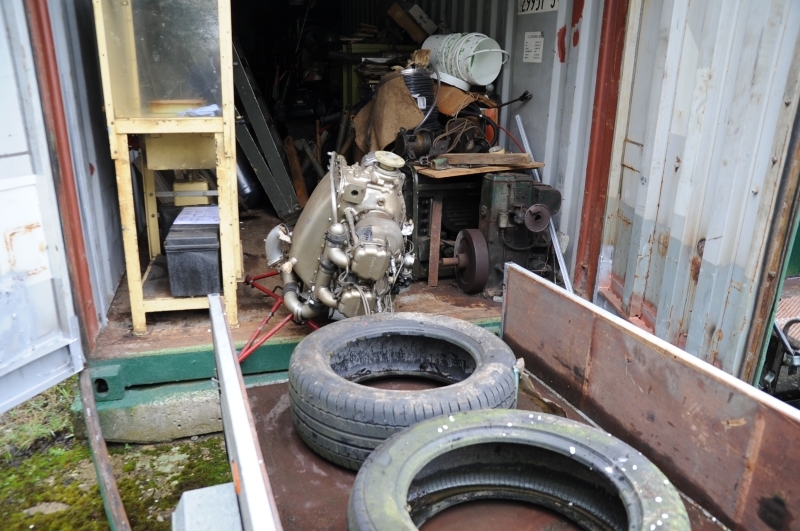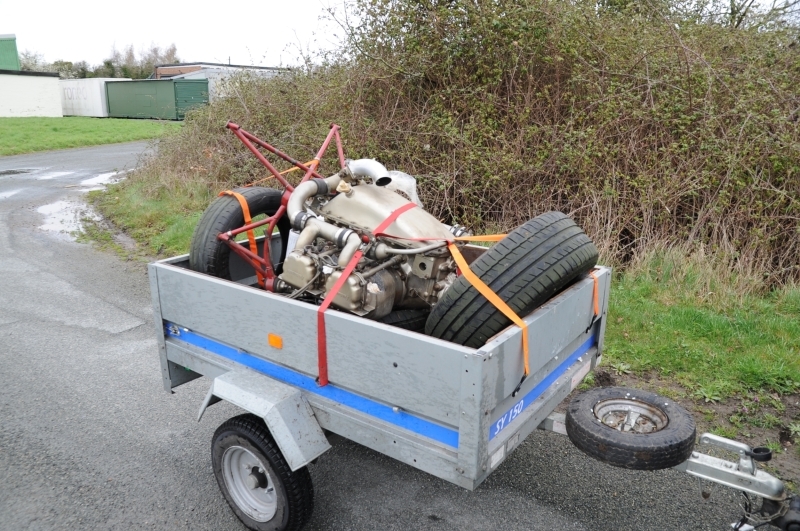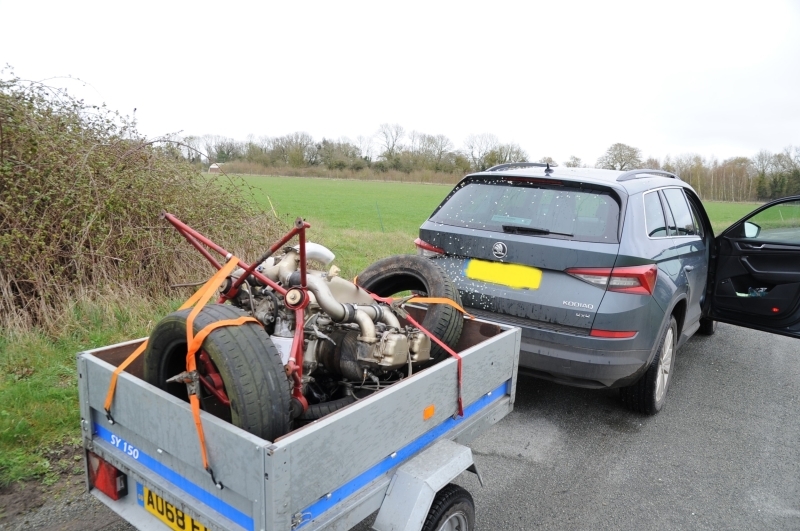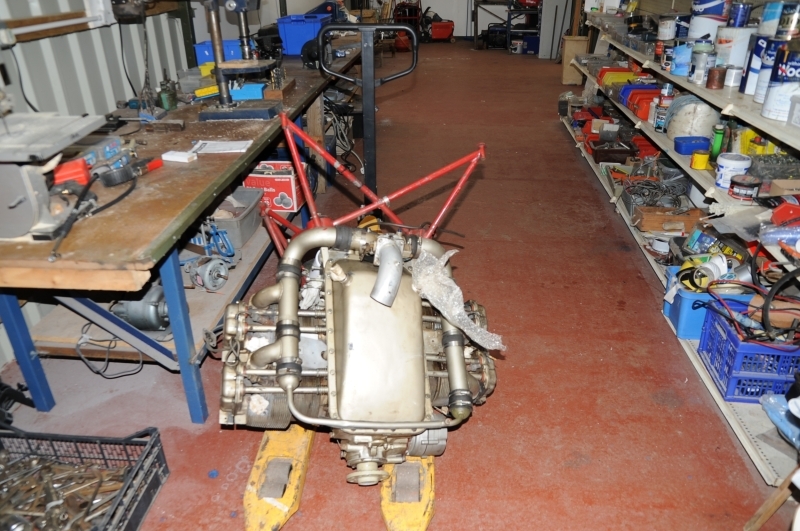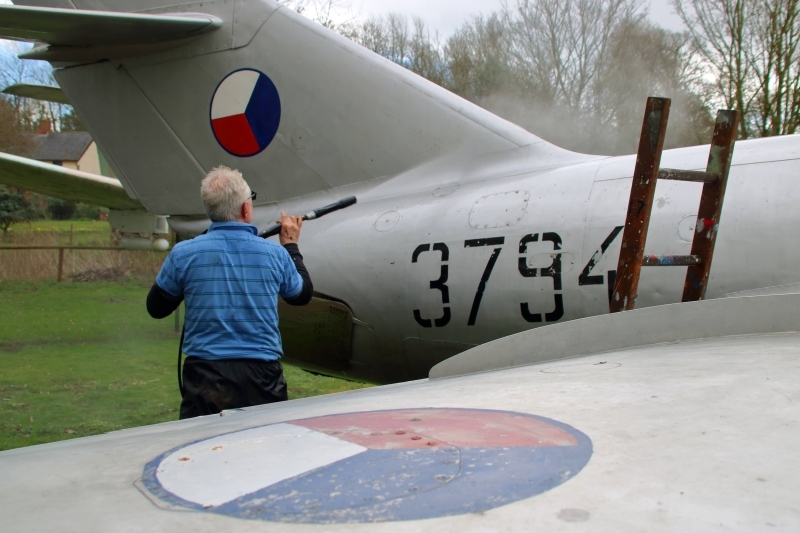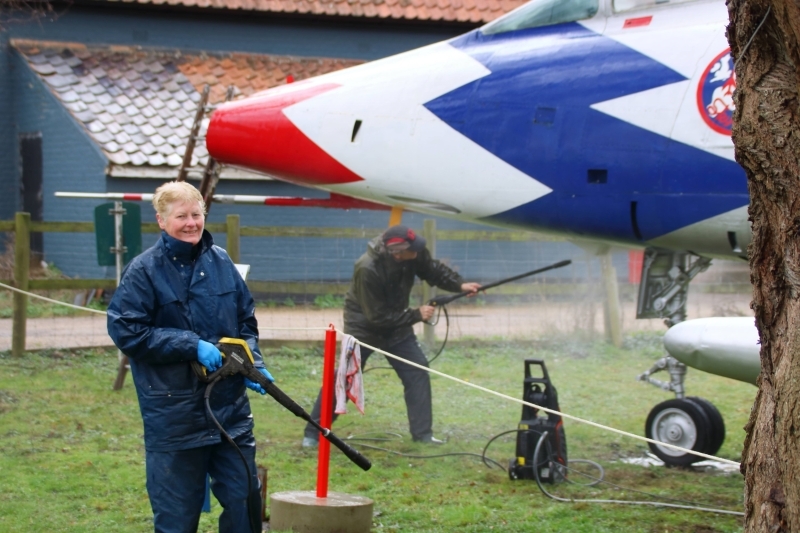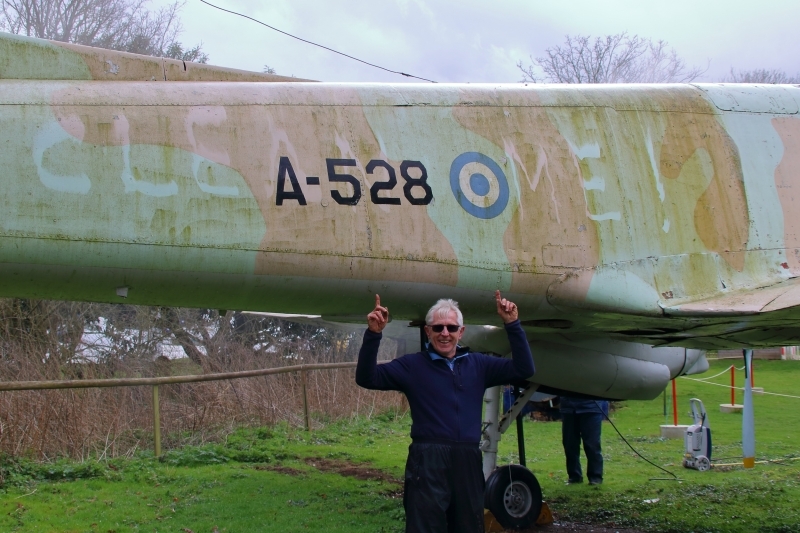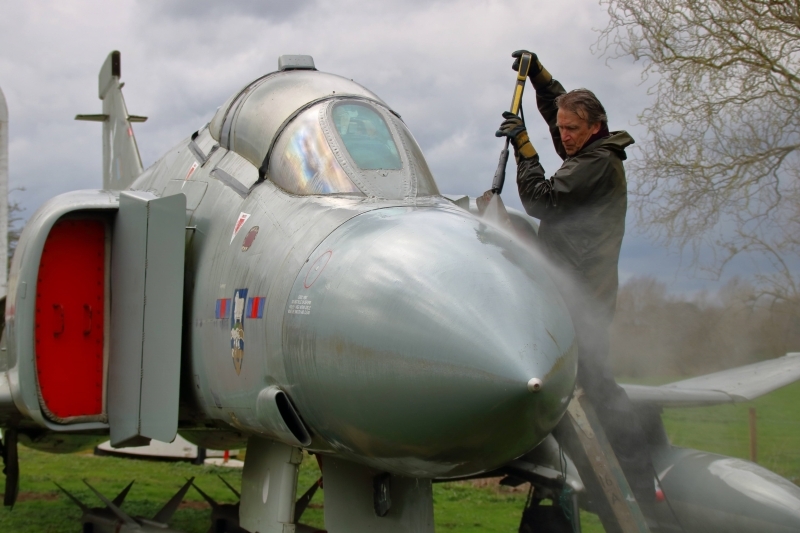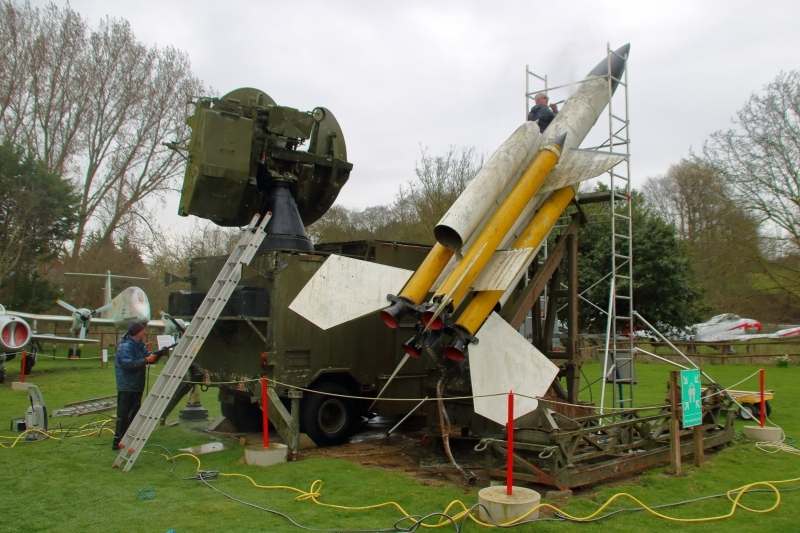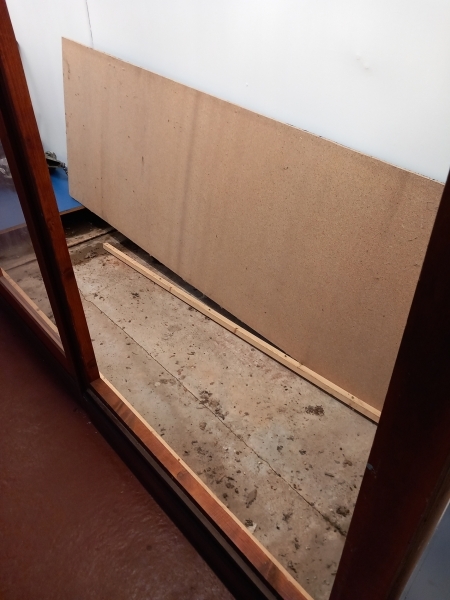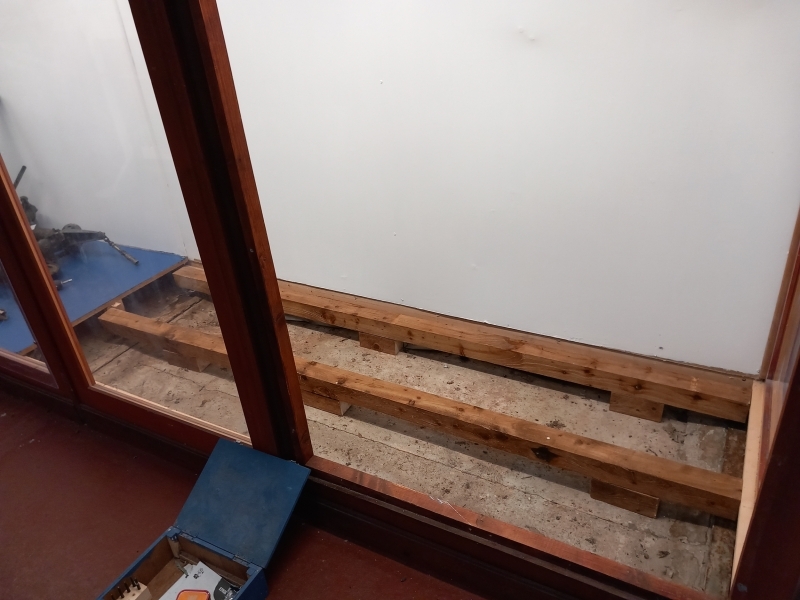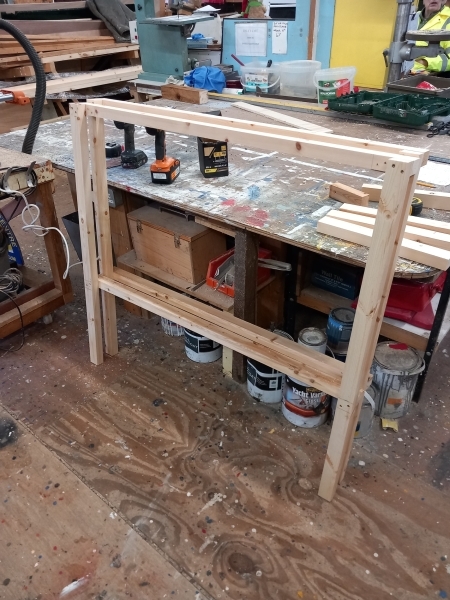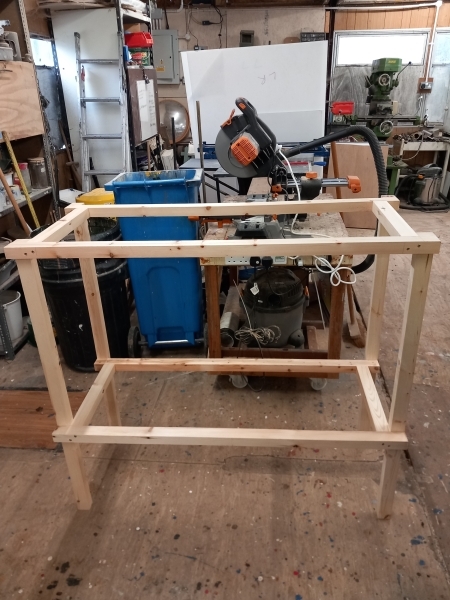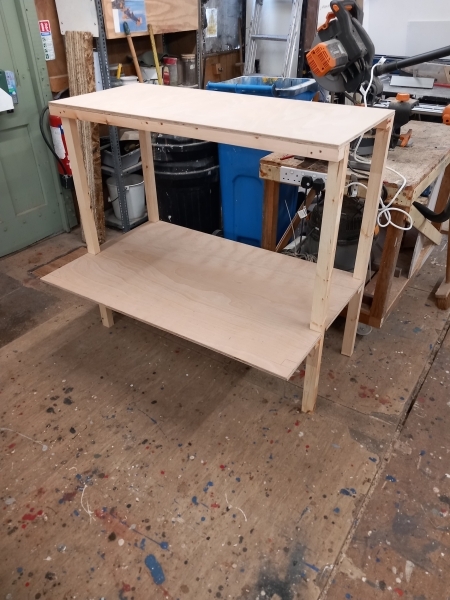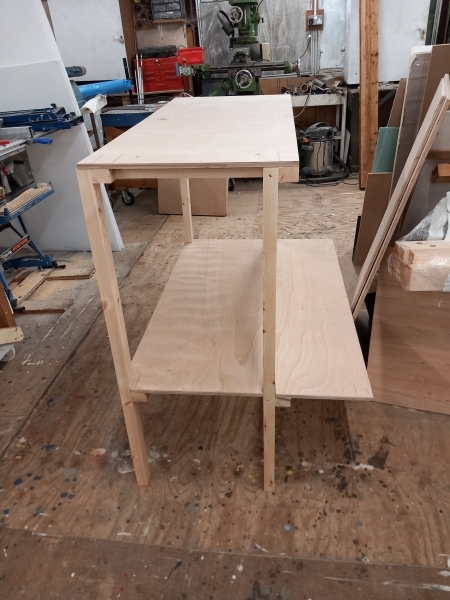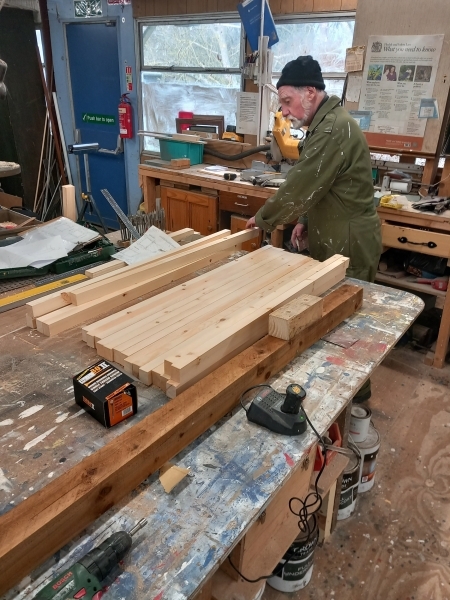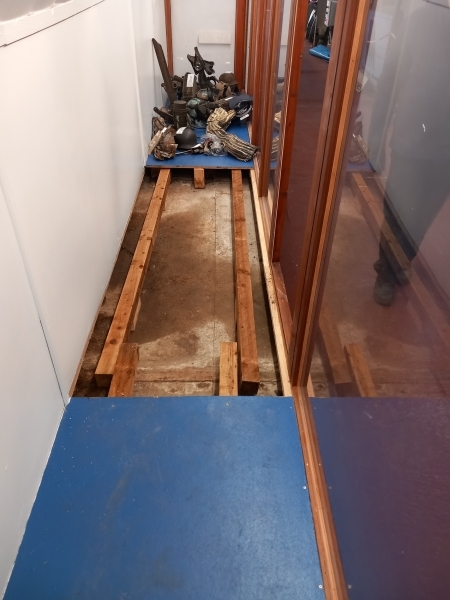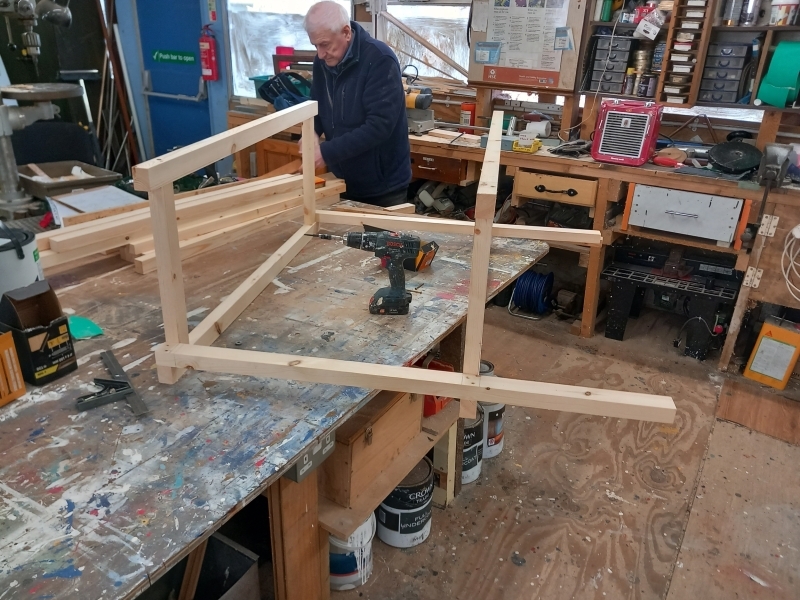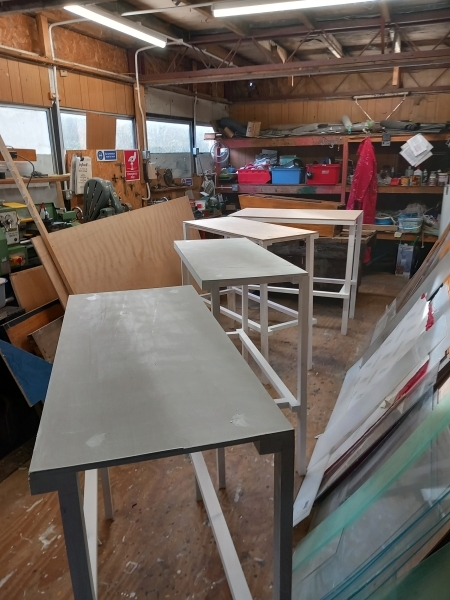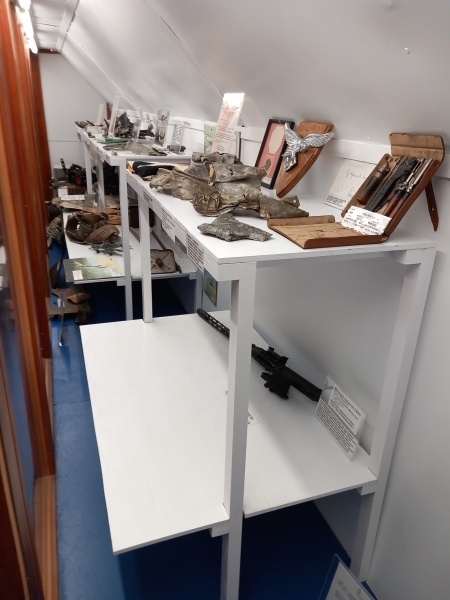NASAM Update as of the 6th Apr 2023
[joli-toc]
From The Chair
Continental Flat Four
On Saturday 15th of April, I headed over to an industrial unit just outside Attleborough. The postcode took my SatNav to a group of buildings so I then had to ask around to find the company I was looking for. It seems that they weren’t well known as I had to speak to several people before one knew where it was. Quite a bit further down the road, as it turned out!
Once located, I was shown the item I’d come to pick up. It was a Continental IO-346 flat-four opposed engine. It was quite a bit bigger than I had expected. Luckily it still fitted neatly into my trailer. With the aid of a winch, it was quickly loaded, balanced and secured. Old tyres have several uses!
The engine was developed from Continental’s flat six-opposed engine. It is quite a rare item as it was only built for two years because it didn’t prove successful.
Once our engineers have built a support platform, it will be placed on display with our other engines.
Watch this space.
Steve B
(Photos) Continental Flat Four
Updates in this Edition
As well as the short update from Steve on the arrival of a new engine for our displays (above), we have a number of updates from the various teams at the Museum in this blog, along with information about the Special Event Day this coming Sunday, the 9th of April.
Bolton and Paul in the Archives
This one may well be of interest to our readers from Norfolk Aviation as we start this edition with a piece from Graham in Archives on a donation made to the museum a few weeks ago. As Graham put it in his note to me, “We had the entire remains of the B&P Association donated to us last week – something that will take weeks to chew through. It is good stuff though, and will really help a display of B&P history somewhere near the P.6 replica“. I, for one look forward to more information coming from these items. Included with the article was an image of an advert for the B&P company included in a supplement to “The Aeroplane” dated 1917.
The Painters
Next up, we have another update from Barry and the Paint Team, who seem to be continually wet at this time of year. Despite the state of the weather, they are getting the aircraft ready in the outside paddocks either for the influx of visitors or the next coat of primer. Whichever it is, the aircraft are looking much better for their attention.
Late News from the Chippies
The chippies are next with an update; Michael producing a report that covers January and February at the Museum. This was obviously an intense time of tea drinking for our valiant chippies, some of whom were stressed by the imperial/metric measurement requirements. Still, lots more cabinets and lots more repairs were carried out inside the hangars.
Special Events Day this coming Sunday
The first of the Museums’ Special Events Day this year is the Annual Easter Egg Hunt on Sunday, the 9th of April 2023 in support of the East Anglia Air Ambulance.
With free parking and free entry to the Museum, this is an inexpensive and excellent family day out at the Museum with lots to see and do. As usual, we will have an Easter Egg Hunt throughout the day. This will take the form of a quiz for the children with a prize for all children competing, and the prize for taking part is an Easter Egg would you believe.
At the end of the day, the Museum will make a donation to the East Anglia Air Ambulance charity and help keep the two air ambulance helicopters flying life-saving missions in our region.
Pete S
From The Teams
From the Archives
Incredible donation of Everything – from the Boulton and Paul Association.
NASAM has always enjoyed a strong association with the remains of the Boulton and Paul aeroplane company – a local company that can trace its roots as far back as 1797, well before the first thoughts of powered flight bubbled to the surface anywhere in the world. Primarily an engineering company, their designs and constructions have found their way around the world and were used in environments as diverse as railway management (they made signal boxes among other infrastructure buildings – at least one of which lives on today in Ripon) and in a religious setting (one of their churches was recognised as still being in use on the Falkland Islands during the conflict with Argentina in the early eighties). The company was based in Norwich, very close to where the current Norwich City football ground now finds itself, and the workforce was recruited locally, and the Association was very happy that all their material should stay close to home.
We have a number of large models on display around the replica P.6 aircraft that was build by Brian Holmes, a leading light in the Boulton and Paul Association, and which Brian gifted to the museum in 2015. Brian also built the detailed models – the P.9, P.15, P32 and P.64, directly from plans that he would have been familiar with from his time working in the B&P design office early in his career.
We were very pleased to be able to host Jonathan Holmes, Brian’s son, at the Museum mid-February this year, when he brought us the huge collection of remaining records, photos, presentations and objects from the now defunct Boulton & Paul Association. Brian himself insisted that everything should come to the Museum after the Association was wound up, and we are extremely grateful for his generosity, for his faith in the Museum, and for the huge amount of material he has donated. It will take Tony and myself literally several weeks to be able to catalogue and assess everything that he has delivered to us, but I have no doubt, as the foremost record of B&P history now in existence anywhere in the world, that many of the items that we now own will combine with existing items to form a large new display in the area of the P.6 in the coming months – it may be that we have our first winter project for 2023…
Not least amongst the items donated are the original plans that Brian Holmes had drawn for himself in order to be able to build the replica P.6 aircraft. Jonathan, who has a wealth of stories and background on the company, the Association and pretty much everything his father created, told me that no original plans existed for the aircraft – anywhere. To resolve this, Brian studied a series of photos, many of which we now have, to determine the structure of the aeroplane – but was left without an idea of the exact size. As it turned out, he realised that he knew one of the pilots that were photographed standing in front of the aircraft, and so he used the pilot’s height measurement to compare to the various vital statistics of the P.6, and went on to draw up the plans which are now manifested in the B&P display as the P.6 replica. Thanks to Jonathan and Brian, we now have those plans, amongst many others, in the Archive.
Jonathan told us of the move of the entire Company’s production facilities with the onset of the Second World War – to Wolverhampton in the Midlands. This was to reduce the chances of the Germans bombing production of the Defiant, and to make it easier for the Company to get the raw materials they needed to support the war effort. It is interesting to consider what the Midlanders made of the ‘foreign’ invasion from Norfolk when the entire workforce was transplanted from the heart of Norwich into the industrial heart of the Black Country – but it evidently worked.
I’ll feature much more of the material that Brian and Jonathan have delivered to us as we work our way through it and add it to the Museum Inventory – but for now, I want to record the grateful thanks of everyone at the Norfolk and Suffolk Aviation Museum to them, to the other members of the Association and to Jonathan’s wife Clare who allowed him to keep everything together in and around their house for so long before it could come to us.
The Archives have just got significantly bigger…
Graham
Note: Boulton And Paul Limited changed their name to Boulton Paul – ie they lost the ‘And’, at the time that they moved from Norwich to Wolverhampton – thus their Defiant aircraft was the Boulton Paul Defiant.
![]()
Paint Team Update
21/03/23 – We are the Paint Team, nobody likes us, but we don’t care!
The team arrived fresh off the back of the latest Flixton Flier where there was no Paint Team content! Zut alors! Evidently, we had upset someone somewhere along the way (or there had been an editorial gaff/oversight – Ed.). Anyways, with shoulders now de-chipped, the team cracked into the day, which held much promise with dry conditions and an expected high nudging 14 degrees (Celsius).
Pressure washing was again the order of the day. Agents Gwen and Ian were dispatched by the Skipper (Cliff) to the front paddock to wash the F100 and the Javelin. The F100 was particularly grubby but was knocked off by lunchtime (see pic).
Meanwhile, agent Mark spent the morning cleaning up the MiG (see pic) which was very green, particularly on the starboard side adjacent to the willow trees. Agent Barry spent most of the morning faffing about with a failing pressure washer, eventually giving up on the Phantom and transferring on to the Pucara. Given its precarious state, the orders from agent John S. were to give the Pucara just a light wetting and not to stand on or under any part of the (near to collapsing) aircraft! This job was ideally suited to the ‘low-pressure’ washer that Barry had been battling with. A bit of frivolity then ensued with some comedian blasting the words “Clean Me!” down the very green starboard side (see pic), prior to a proper wash down.
After lunch, agent Ian moved across from the F100 to give the (reasonably clean) Javelin a quick ‘tickle’, before jumping onto the Phantom. By close of play, agent Ian had cleaned up about two-thirds of the port side of the Phantom (see pic), getting very wet and washing off his Tenerefian tan in the process (see pic)!
Next door agents Gwen and Mark took over from Barry. Armed with some decent pressure washers, they proceeded to give the very green Pucara a good going over (see pic). By the end of the day, the Pucara was looking much cleaner, albeit it may have sunk a bit more (on the now very soft ground) on the port side. Yikes!
Having reached the end of his tether trying to clean the Pucara by effectively ‘blowing water up a straw’ agent Barry spent the afternoon taking reference photos and measurements of the Hunter (XG254) markings, prior to sanding. Barry’s bad day was then completed by him leaving his notepad and tape measure on the Hunter wing, something he didn’t establish until returning to base in Ipswich! With rain forecast overnight, urgent feelers were then put out, and many thanks to Brian J, who came to Barry’s rescue (via Cliff) retrieving said notepad Tuesday evening. Phew, that was a close one!
Next week we’ll be washing our way up the middle paddock, starting at the Phantom.
28/03/23 – How wet can you get?
The team arrived at El Museo to leaden skies and the prospect of rain for most of the day, deep joy!
So, on the basis that we were going to get wet anyway, the boys donned the ‘full wets’ and got the pressure washing equipment set up ready for action. Having completed the MiG and Pucara last week, next in line was cleaning The ‘hound. Mark and Barry got the scaff’ set up, ready to wash down the top of the Bloodhound, while Cliff concentrated on the control wagon at ground level (see pic).
Next door, Ian set out to finish what he started last week on the Phantom. By lunchtime, the port side was complete, plus the missiles under the wings (see pic). By early afternoon Mark and Cliff had finished off the Bloodhound as best they could (given there are so many fiddly bits) and moved over to help Ian clean the starboard side of the ‘Double Ugly’ FGR2.
Down one pressure washer again, Barry resorted to a long-handled brush and some soapy water and proceeded to give the Phantom wing tops some extra tlc, before moving on to the adjacent ex-Norwich airport radar unit.
By mid arvo, the rain had really set in, and the (now very soggy) boys relocated to the Fokker F27 to give that a quick once over before retiring cold and wet to the NAAFI for a well-earned hot cuppa and a change of clothes!
Barry
(Photos) Paint Team Update
![]()
From the Chippies
See, I told you all it was late news; the Chippies have been resting following their strenuous efforts over the Winter. We’ve only just woken up and remembered we like telling everyone what we’ve done, how clever we are, and how many pints of tea we have consumed. Today we’re reporting on Luftwaffe Weg Part Zwei.
In January, The Boss, aka the Museum Manager Gary, having seen the shelves that went into the Boulton & Paul Hangar for the new Commercial Aviation display and said “I want something like that for Luftwaffe Weg”. In reply, the Chippies chanted their favourite song “Show us a picture!” The Boss, used to the stubborn ways of Chippies, went away and a couple of weeks later produced said picture.
This picture was a work of art, with multiple views and dimensions, and numbers of required units. Dave H immediately complained because The Boss had dared to use metric measurements, but Michael F kindly translated them into ancient Imperial dimensions for him. Thus armed with the totals required, Dave placed orders to Betts, who duly translated them back into metric and delivered the right amount of wood!
As with all projects at the Museum, nothing is easy. As the Chippies made preparations to start work, The Boss said, “can you repair the floor in the cabinets? Our Painter friends, while giving it a lick of paint, have caused it to collapse”. Removing the offending floor section showed that the total support at the rear was from the plywood wall, which was itself somewhat mobile. An emergency order for some fence posts was made: the depth required, fortunately being two fence posts deep if laid on their sides. Why fence posts? Because they’re pretreated for damp conditions, which we always expect in the hangar.
The next work day, Betts delivered the posts, so Ash and Michael built under two-floor supports and installed them in the first section. The following Thursday, Michael and Les rebuilt the remaining two sections – having removed a small pile of earth and a mummified mouse from the centre section!
Dave and Ash, back in the workshop, started on the first shelf unit, working out how to translate The Boss’s concept drawings into reality. The interesting, overhanging lower shelf requiring a wider support caused our heroes a small hiatus, but they eventually came up with a solution using flat bars to support the weight. Thus both top and bottom frames are identical, and all four legs could be the same. See, we do consider things when it comes to mass production.
Ash and Michael took the shelf unit over to the Hangar to see if it would fit. Yes! Just! If you took it in through the slightly wider end panel… And put the bottom shelf on once the unit was inside the display cabinet. But it was just as The Boss imagined, so he said.
And it was mass production: with the first unit constructed (and yes, Dave did have some Imperial/Metric moments), it was time to build five more. As February began, Dave and Morris measured and cut, then measured and cut some more, and counted and cut until their eyes popped out. All while taking breaks to consume those copious cups of tea.
The next work day was a Thursday, so Michael and Ash first took the pile of wood, several boxes of large screws and a pair of drills and turned them into a stack of frames. Then add four legs, and there’s your next unit. Over to Les with a tin of acrylic primer and a suitably large paintbrush (he only uses ones marked Large) for the first coat on ready for the Painters in their Winter Lair, or the Engineering Workshop as it is properly called.
Six shelf units built: the prototype in one day, the remaining five on a second. We don’t hang about. And how much tea was drunk? Four people per day, four cups of tea each three days in preparation and manufacture. You can do the maths, but we think it wasn’t enough….
Now those of you who are Eagle-eyed and count the number of units will notice … that there are only five in the display cabinet! Six would have fitted, just, but then The Boss learned that the contents needed a dehumidifier to protect from moisture, which called for a rearrangement. And where is number 6? Maybe we’ll reveal in a future blog.
Michael
(Photos) Chippies Update
The Repeat Info
The repeat information is still here I’m afraid, and I make no apologies for keeping his section in our blog. We are a charitable organisation relying on monies from the public to keep us going. Any help we receive is gratefully accepted and enables the museum to continue in our mission “To conserve, preserve and promote the history of aviation in East Anglia, whilst providing a fun, family-friendly and interactive museum, promoting education and remembrance of the events of the past“.
Are you thinking of helping ??
 We obtain most of our finances by donations and by membership fees. We save money by having a dedicated group of volunteers that keep the museum and the exhibits both manned and maintained. We hope therefore a few people may consider helping in the ways below.
We obtain most of our finances by donations and by membership fees. We save money by having a dedicated group of volunteers that keep the museum and the exhibits both manned and maintained. We hope therefore a few people may consider helping in the ways below.
There are three easy ways to help: Help by becoming a Museum Member, also by Volunteering to help at the museum, or by Donating to assist in our running costs. Please click on the appropriate button below to access the appropriate information:
Keep Up To Date
![]() To keep up to date with further information, please keep an eye on our Social Media (see the Social Media buttons at the foot of this blog) or click on the button below to be notified by email of any upcoming changes by seeing the latest blog.
To keep up to date with further information, please keep an eye on our Social Media (see the Social Media buttons at the foot of this blog) or click on the button below to be notified by email of any upcoming changes by seeing the latest blog.

